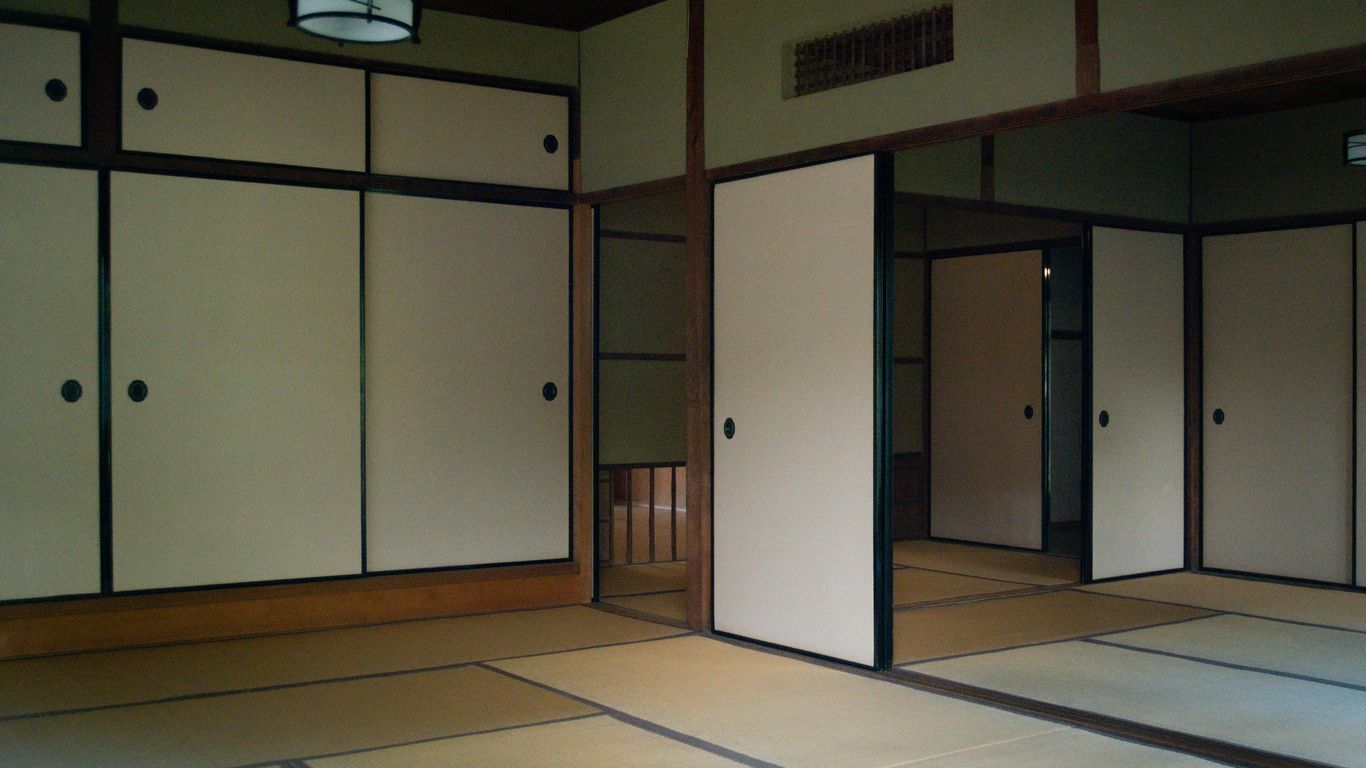Thinking about a trip to Kyoto? Maybe you’re looking for something a bit different, something beyond the usual tourist spots. We’re talking about a Kyoto Machiya Buyout, where you can really get a feel for the old ways. Imagine staying in a traditional townhouse, but with all the modern comforts, and getting to do things most people only dream of, like private tea ceremonies and visiting temples after everyone else has gone home. It’s a way to experience Kyoto that’s both luxurious and deeply cultural.
Key Takeaways
- A Kyoto Machiya Buyout offers a unique, private way to experience the city’s traditional architecture and culture.
- Guests can enjoy exclusive access to cultural activities like private tea master sessions and after-hours temple visits.
- Machiya, once seen as outdated, are now revitalized heritage homes, blending old charm with modern luxury.
- These buyouts provide bespoke stays for groups, focusing on personalized service and curated experiences.
- This type of travel connects visitors with Kyoto’s artisan traditions, local crafts, and authentic culinary scenes, offering a journey off the beaten path.
Exclusive Kyoto Machiya Buyout Experiences
Discovering the Allure of Traditional Machiya
Kyoto’s machiya, those beautiful traditional wooden townhouses, are more than just old buildings. They’re a real piece of the city’s history, and getting to stay in one, especially when you can rent the whole place out, feels pretty special. It’s like stepping back in time, but with all the modern comforts you’d expect. These aren’t just places to sleep; they’re gateways to experiencing Kyoto in a way most visitors never get to. You’re not just a tourist passing through; you’re living, even if just for a little while, in a space that has seen generations of life unfold. It’s a chance to connect with the city on a much deeper level, away from the usual crowds.
Tailored Luxury for Discerning Travelers
When you book a machiya buyout, it’s all about you. Forget cookie-cutter hotel rooms. This is about creating a trip that fits exactly what you want. Think about it: you get a whole traditional house to yourself, your friends, or your family. It’s perfect for celebrations, special get-togethers, or just a really unique vacation. The whole experience is designed to be luxurious and personal. You can have private chefs, guided tours that aren’t on any public schedule, and services that cater to your every need. It’s the kind of travel that feels truly bespoke.
Unforgettable Kyoto Machiya Buyout
So, what makes a machiya buyout so unforgettable? It’s the blend of history and modern luxury, all wrapped up in a private, exclusive package. Imagine waking up in a beautifully restored wooden house, the morning light filtering through the shoji screens. You can enjoy a private tea ceremony in your own garden, or have a kaiseki dinner prepared just for your group. It’s about having access to authentic Kyoto experiences without the usual hustle and bustle. This kind of trip leaves you with memories that really stick with you, a true taste of Kyoto’s unique charm.
Immersive Cultural Encounters

Private Tea Master Sessions
Forget just sipping tea; this is about understanding its soul. You’ll get to sit down with a seasoned tea master, someone who has dedicated years, maybe even their whole life, to the art of chanoyu. It’s not just about the taste, though that’s amazing too. You’ll learn about the specific movements, the tools, the history behind each gesture, and how the season influences the entire ceremony. It’s a chance to connect with a practice that’s deeply woven into Japan’s cultural fabric. You might even get to try whisking your own matcha, which is harder than it looks!
After-Hours Temple Visits
Imagine walking through ancient temple grounds, usually bustling with crowds, but now it’s just you and the quiet. We arrange special access to some of Kyoto’s most revered temples after the gates have closed to the public. Think about standing in a serene Zen garden under the moonlight, or exploring a hallowed hall without the usual hustle. It’s a profoundly peaceful experience, offering a different perspective on these historic sites. You can really feel the centuries of history around you.
Authentic Kyoto Traditions
This is where you get to experience Kyoto like a local, not just a tourist. We’re talking about hands-on activities that go beyond the surface. You might find yourself learning the basics of calligraphy, trying your hand at ikebana (flower arranging), or even participating in a traditional craft workshop. These aren’t just demonstrations; they’re opportunities to engage directly with the skills and artistry that define Kyoto. It’s about feeling the texture of the paper, the weight of the brush, or the shape of the clay in your hands.
These experiences are designed to give you a genuine feel for Kyoto’s living culture. It’s about more than just seeing; it’s about participating and creating your own memories.
Here’s a glimpse of what you might encounter:
- Tea Ceremony: Learn the etiquette and philosophy behind this mindful ritual.
- Zen Meditation: Guided sessions in a tranquil temple setting.
- Craft Workshops: Try your hand at pottery, dyeing, or fan making.
- Calligraphy: Discover the art of Japanese brush writing.
The Renaissance of Kyoto’s Machiya
From Liability to Coveted Heritage
For a while there, it really looked like Kyoto’s traditional wooden townhouses, the machiya, were on their way out. Back in the day, they were just seen as old, inconvenient buildings. Think about it: poor insulation, tricky heating, and not exactly set up for modern kitchens or bathrooms. Plus, finding skilled craftspeople to fix them up was getting harder and more expensive. During the economic boom of the 80s, land prices went through the roof, and tearing down these old structures to build shiny new condos or office blocks seemed like the smart move. It really changed the look of Kyoto, making it a bit of a jumble.
Revitalizing Architectural Gems
But then, something shifted. After the bubble burst in the early 90s, people started looking at these old houses differently. It’s pretty amazing, really. Hundreds of them have been brought back to life, not just as homes, but as cool cafes, restaurants, shops, and even offices. It’s like they went from being a headache to a real asset. This revival isn’t just about keeping old buildings standing; it’s about giving them a new purpose that fits with modern life.
The Machiya Boom in Modern Kyoto
Today, there’s a genuine buzz around machiya. You see them popping up everywhere, not just in Kyoto but influencing design elsewhere too. It’s not just about aesthetics; it’s about embracing a piece of history and making it work for today. This whole movement has really captured the imagination, uniting people who love Kyoto and its unique character. It’s a testament to how old can become new again, and in a really beautiful way.
Here’s a quick look at how the perception and use of machiya have changed:
| Time Period | Perception |
|---|---|
| Mid-to-late 20th C | Outdated, inconvenient, economic liability |
| 1980s | Demolished for lucrative development |
| Post-1991 | Revitalized, commercial and residential use |
| Present | Coveted heritage, design inspiration, cultural icon |
The shift from seeing machiya as a burden to celebrating them as a vital part of Kyoto’s identity shows a deep appreciation for heritage. It’s about finding ways to blend the past with the present, creating spaces that are both historically significant and practically useful for contemporary living.
Bespoke Machiya Stays

Private Residences for Exclusive Groups
Forget cookie-cutter hotels. When you book a machiya buyout, you’re not just getting a place to sleep; you’re claiming a piece of Kyoto’s soul for yourself and your companions. These aren’t just houses; they’re private estates, each with its own story and character, ready to become your home base. Imagine gathering your closest friends or family, all under one traditional roof, with plenty of space to spread out and connect. It’s a chance to really live like a local, not just visit.
Seamless Service and Elegance
While the machiya itself offers an authentic experience, we believe in blending tradition with modern comfort and convenience. Think of it as having your own personal concierge, but without the fuss. From the moment you arrive, a dedicated team is on hand to manage everything, from arranging private chefs to booking exclusive cultural experiences. They handle the details so you can focus on soaking in the atmosphere and making memories. It’s about quiet efficiency and making your stay feel effortless.
Curated Experiences Beyond the Ordinary
Staying in a machiya is just the beginning. We work with you to craft an itinerary that goes beyond the usual tourist spots. Want a private calligraphy lesson in your own living room? Or perhaps a guided tour of a local artisan’s workshop? We can arrange it. The goal is to create a journey that’s uniquely yours, filled with moments that truly capture the spirit of Kyoto.
Here’s a glimpse of what a curated stay might include:
- Welcome Tea Ceremony: Start your stay with a calming introduction to Japanese tea culture, right in your machiya.
- Private Guided Tours: Explore hidden temples or serene gardens with an expert who knows the city’s secrets.
- Artisan Workshops: Try your hand at traditional crafts like pottery or textile dyeing.
- Exclusive Dining: Enjoy multi-course kaiseki meals prepared by a private chef in your machiya’s dining space.
Machiya are more than just old buildings; they are living spaces that have witnessed generations of life. They offer a connection to the past that modern accommodations simply can’t replicate. The natural materials, the way the light filters through the shoji screens, the quiet courtyards – it all contributes to a unique sense of place and tranquility. It’s an environment that encourages slowing down and appreciating the moment.
Artisan Traditions and Culinary Delights
Engaging with Kyoto’s Craftsmanship
Kyoto is a city where old skills are still very much alive. You can see this in the way artisans work, often with a quiet focus that’s been passed down for generations. It’s not just about making things; it’s about a deep connection to materials and techniques. This dedication is what makes Kyoto’s crafts so special. Think about pottery, textiles, or lacquerware – each piece tells a story of the maker’s hands and the history behind the craft.
- Pottery: From delicate teacups to sturdy bowls, Kyoto potters use local clays and traditional firing methods. You can often visit workshops and see them at work.
- Textiles: Nishijin weaving, for example, creates intricate fabrics used for kimonos and obi sashes. The patterns are complex and the colors are rich.
- Lacquerware: Known for its smooth finish and durability, Kyoto lacquerware is often decorated with gold or silver. It takes many layers and a lot of patience to create.
Exclusive Dining Experiences
When it comes to food, Kyoto offers a refined experience. It’s not just about eating; it’s about appreciating the presentation, the seasonal ingredients, and the subtle flavors. Many of the best meals are found in places that have been serving traditional Kyoto cuisine, or kaiseki, for ages. These meals are often multi-course, with each dish carefully prepared and beautifully arranged. It’s a way to taste the essence of the season and the local area.
Dining in Kyoto is an art form. It’s about balance, seasonality, and a deep respect for ingredients. The chefs often draw on centuries of culinary knowledge, presenting dishes that are as pleasing to the eye as they are to the palate.
The Art of Japanese Tea
No visit to Kyoto is complete without experiencing a traditional tea ceremony. This isn’t just about drinking tea; it’s a ritual that emphasizes mindfulness and hospitality. The preparation and serving of matcha (powdered green tea) are done with precise movements, creating a calm and contemplative atmosphere. It’s a chance to slow down and appreciate a moment of quiet beauty.
Here’s what makes the tea ceremony so unique:
- The Setting: Often held in a simple, serene tea room, the environment is designed to promote peace.
- The Utensils: Each tool, from the whisk to the bowl, is chosen with care and has its own history.
- The Host’s Actions: Every gesture is deliberate, showing respect for the guest and the tea itself.
- The Taste: The slightly bitter, vibrant green matcha is balanced by a small, sweet confection served beforehand.
Beyond the Tourist Trail
Kyoto is famous, and for good reason. But sometimes, the most memorable experiences are found when you step just a little bit off the beaten path. This section is all about finding those hidden gems, the places and activities that give you a real feel for the city, away from the usual crowds.
Accessing Hidden Kyoto
Forget the long lines and selfie sticks for a moment. We’re talking about discovering Kyoto’s quieter corners. Think about stumbling upon a tiny, family-run pottery studio tucked away in a back alley, or finding a serene garden that isn’t in any of the guidebooks. It’s about those moments of genuine discovery.
- Seek out neighborhood shrines: Many small shrines are beautiful and peaceful, offering a glimpse into local worship.
- Explore lesser-known shopping streets: Beyond the main thoroughfares, you’ll find shops selling unique crafts and local snacks.
- Wander through residential areas: Observe the architecture and daily life, but always be respectful of private homes.
The real magic of Kyoto often lies in its quiet moments, in the unexpected encounters that happen when you allow yourself to get a little lost. It’s in these spaces that the city truly reveals its soul.
Private Cultural Performances
Imagine experiencing traditional Japanese arts not in a large, impersonal venue, but in an intimate setting. We can arrange private performances, perhaps a geiko and maiko dance in a traditional tea house, or a private session with a master calligrapher demonstrating their art. These are opportunities to connect with Kyoto’s artistic heritage on a personal level.
| Art Form | Typical Setting | Experience Focus |
|---|---|---|
| Maiko Dance | Private Tea House | Graceful movement, music, conversation |
| Calligraphy | Artisan Studio | Live demonstration, artistic process |
| Koto Music | Machiya Salon | Serene melodies, instrument details |
Unique Itineraries
Your trip to Kyoto can be more than just ticking off landmarks. We help craft itineraries that are tailored to your interests, whether that’s exploring ancient craft techniques, delving into the history of specific neighborhoods, or simply finding the best spots for quiet contemplation. It’s about creating a journey that feels uniquely yours, filled with moments that surprise and delight you.
Preserving Kyoto’s Architectural Soul
The Importance of Machiya Preservation
Kyoto’s machiya aren’t just old buildings; they’re living history. For a long time, these traditional wooden townhouses were seen as a bit of a burden, especially when they fell into disrepair. But lately, there’s been a big shift. People are starting to see them not as liabilities, but as valuable pieces of Kyoto’s identity. It’s about more than just keeping them standing; it’s about making sure they continue to be a part of the city’s story.
Renovation for Modern Luxury
When we talk about saving machiya, it’s not about freezing them in time. Most of the time, the goal is ‘revival’ rather than just ‘preservation.’ This means finding ways to make these old structures work for today’s world. Think about it: you can’t just leave them as they are and expect them to survive. Many are being updated to include modern comforts, but in a way that respects their original character. Sometimes this means big changes, like replacing old lattice windows with clear glass for shops or restaurants. Other times, it’s about highlighting the contrast between old and new, like using sleek stainless steel next to rough wooden beams. It’s a balancing act, for sure.
Integrating Heritage with Contemporary Comfort
So, how do you actually make an old machiya livable today? It’s a mix of respecting the past and embracing the present. Here are a few ways this happens:
- Structural Updates: Addressing things like insulation, plumbing, and electrical systems to meet modern standards without ruining the look.
- Functional Adaptations: Changing layouts to suit new uses, whether it’s a boutique hotel, a cafe, or a private residence, while keeping key architectural features.
- Aesthetic Blending: Carefully choosing new materials and designs that complement the original wood, plaster, and tile, rather than clashing with them.
- Embracing Imperfection: Sometimes, the beauty is in the wear and tear. Scars on old wooden pillars or slightly uneven walls can add character when paired with modern touches.
The idea is to create spaces that feel both authentic and comfortable, connecting Kyoto’s past with its future in a tangible way. It’s about making sure these beautiful buildings have a purpose for generations to come.
It’s fascinating to see how these houses are being reimagined. Some are becoming art studios, with artists living and working in them, sometimes adding their own unique, modern flair. Others are being turned into exclusive accommodations, offering a truly unique Kyoto experience. The key is that they’re not just being preserved; they’re being lived in and used, which is probably the best way to keep their spirit alive.
Crafting Your Ultimate Kyoto Journey
Personalized Travel Planning
Planning a trip to Kyoto can feel a bit overwhelming, right? There’s so much to see and do, and you want to make sure you don’t miss out on the really special stuff. That’s where we come in. We help you put together a trip that’s just for you, focusing on those unique Kyoto experiences. Think less about ticking boxes and more about creating memories that stick. We listen to what you’re looking for – whether it’s quiet moments of reflection, deep dives into local crafts, or simply enjoying the best food the city has to offer. Our goal is to make your Kyoto adventure feel completely yours.
Luxury Accommodations
When you’re staying in Kyoto, where you rest your head matters. We’re talking about more than just a place to sleep; it’s about finding a space that fits the mood of your trip. We focus on beautiful, traditional machiya houses that have been updated for modern comfort. Imagine waking up in a beautifully restored wooden house, with tatami mats underfoot and a small garden to look out on. These aren’t just hotels; they’re private residences that offer a real sense of place. We also look at other high-end options, always keeping in mind that you want comfort, style, and a connection to Kyoto’s unique atmosphere.
Unparalleled Access
Kyoto has its famous sights, and they’re great, but there’s a whole other layer to the city that most visitors never get to see. We arrange for you to experience things that are usually off-limits. This could mean private sessions with tea masters, getting into temples after the crowds have gone home, or even attending small, intimate cultural performances. It’s about getting behind the scenes and connecting with Kyoto in a way that feels truly special and exclusive. We believe that the best travel experiences come from having access to the authentic heart of a place.
Here’s a look at what kind of exclusive access we can arrange:
- Private Tea Ceremony: Learn the art of chanoyu from a seasoned tea master in a serene setting.
- After-Hours Temple Visits: Experience the quiet beauty of Kyoto’s sacred sites without the daytime crowds.
- Artisan Workshops: Get hands-on with traditional crafts like pottery or textile dyeing.
- Geisha District Exploration: Enjoy a guided walk through Gion, with insights into its history and culture.
We focus on creating a travel plan that feels less like a checklist and more like a personal discovery. It’s about finding those quiet moments and unique connections that make a trip truly unforgettable.
Ready to plan your dream trip to Kyoto? We’ve got all the tips and tricks to make your journey unforgettable. From ancient temples to bustling markets, Kyoto has something for everyone. Don’t miss out on the magic! Visit our website today to start planning your perfect Kyoto adventure.
A Lasting Impression of Kyoto
So, that’s a wrap on our unique Kyoto adventure. From the quiet elegance of a private machiya stay to the profound stillness of a temple after dark, and the refined art of tea with true masters, it was an experience that really sticks with you. It’s more than just a trip; it’s a chance to connect with Kyoto on a level most visitors never get to see. We hope this glimpse into such exclusive moments inspires you to seek out your own unforgettable journeys.
Frequently Asked Questions
What exactly is a ‘Machiya’?
A Machiya is a traditional wooden townhouse found in Kyoto. Think of it as an old-style Japanese house that used to be common in cities. Many of these beautiful old buildings are now being fixed up and used for special stays.
What makes a Machiya buyout special?
When you ‘buy out’ a Machiya, you get the whole place to yourself, like renting a private mansion. It’s a super exclusive way to experience Kyoto, offering privacy and a unique chance to live like you’re from old Japan, but with modern comforts.
What are ‘Tea Masters’ and why would I have a session with one?
Tea Masters are experts in the Japanese tea ceremony, a very old and graceful ritual. Having a private session means you get to learn about this art form directly from a master, experiencing a peaceful and traditional part of Japanese culture up close.
What does ‘After-Hours Temple Visits’ mean?
Usually, temples close their doors to the public in the evening. This experience lets you visit some of Kyoto’s amazing temples when they’re quiet and empty, offering a more personal and mystical connection to these historic places.
Is this kind of trip suitable for families or just adults?
These experiences are designed for groups looking for something truly special and luxurious. While families can enjoy them, they often appeal more to adults or older teens who appreciate culture, history, and exclusive access.
How are these Machiya stays different from a regular hotel?
Instead of a standard hotel room, you’re staying in a historic building with its own unique charm and character. Plus, the buyout means you have the entire space for your group, and the services are highly personalized, going way beyond what a hotel offers.
What kind of ‘authentic traditions’ can I expect?
You might experience things like private tea ceremonies, learning about traditional crafts, enjoying special Kyoto meals, and perhaps even participating in local customs. It’s all about diving deep into the real Kyoto culture.
How do I book or find out more about these Machiya buyout experiences?
Typically, websites like Paltino.com specialize in arranging these kinds of high-end, custom trips. They handle all the planning, ensuring a seamless and luxurious journey from start to finish.












